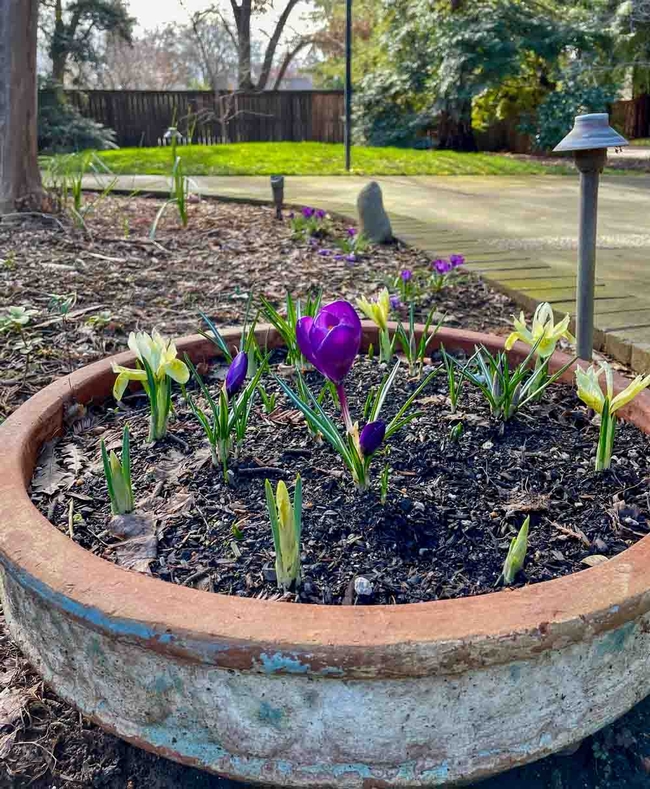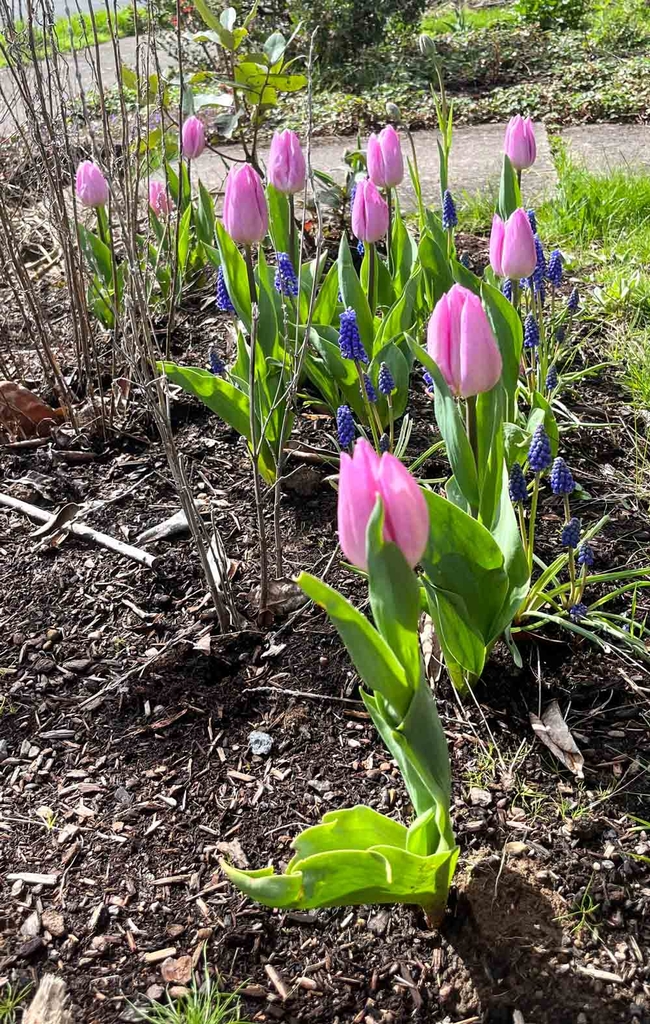Autumn has finally arrived! We have shorter cooler days, and the leaves are turning brilliant Fall colors. Gardeners with some foresight and planning can use this time of year to plant bulbs for a riot of Spring flowers. With their potential for promised beauty, bulbs are like hidden jewels waiting to rise up when warm weather returns. The very act of planting Fall bulbs demonstrates one's faith in nature's cycles, where life begins anew when, eventually, Spring returns.
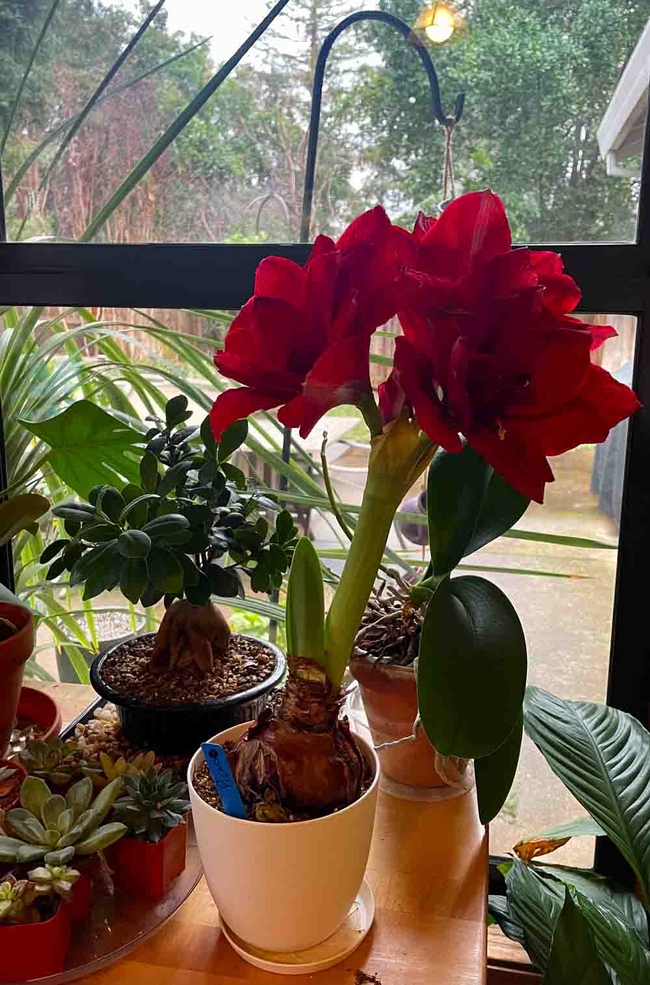
Botanically, these perennial plants are geophytes, adapted to store their nutrients and energy in underground storage structures. Tulips and daffodils are “true” bulbs (they have fleshy layers surrounding a central bud) and are perhaps the most commonly known. But plants that store their energy and nutrients in corms (bulbs that do not have layers) and in rhizomes (which have long, narrow underground stems that develop parallel to the soil surface) are also geophytes. All geophytes are adapted to produce new growth from these storage structures after periods of dormancy or environmental stress, such as drought or chilling.
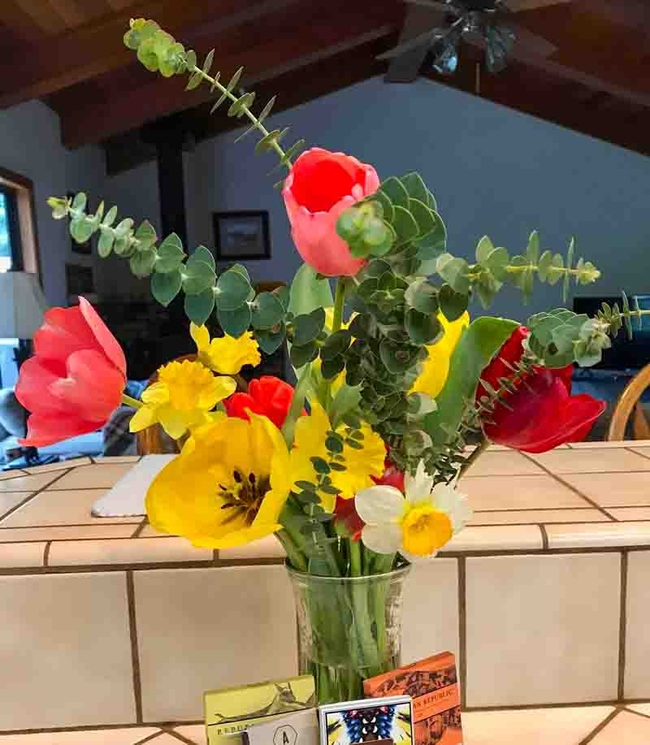
Today, in addition to tulips and daffodils, bulbs often found for sale include alliums, fritillaries, snowdrops (Galanthus), snowflakes (Leucojum), grape hyacinths, and anemones. Commonly planted corms include crocuses and Dutch irises. Rhizomatous plants that can be planted in the Fall include peonies (typically planted as bare-root divisions), coral bells (heuchera), and bearded irises.
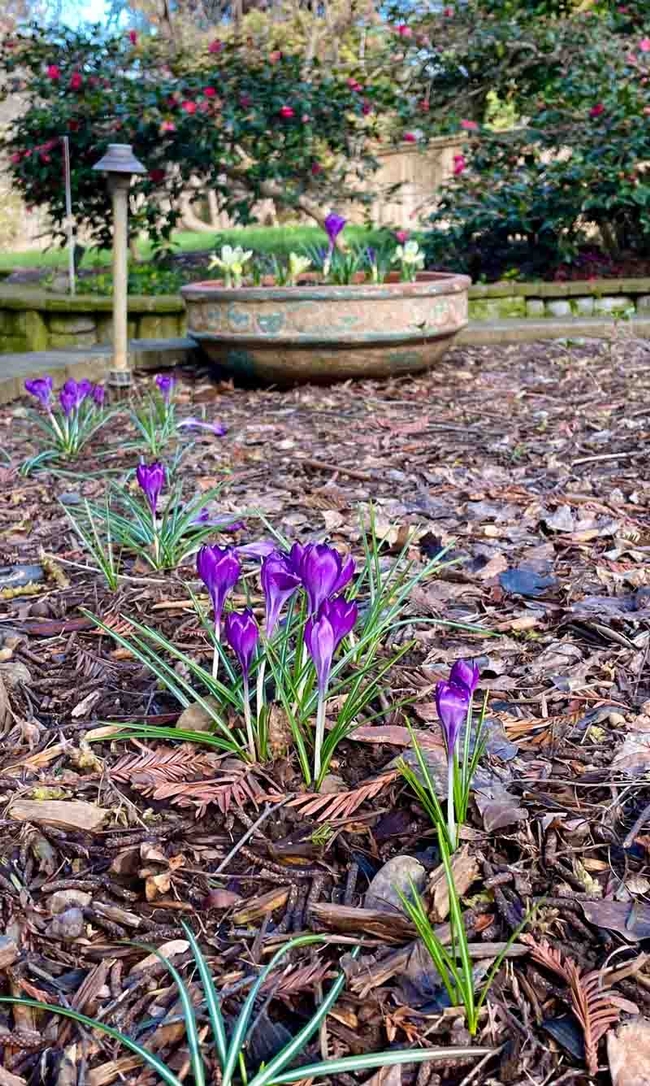
There are some basic rules to ensuring success with bulbs:
1) Plant at the correct depth, which is often listed on the bag they have come in.
2) Ensure they are planted with the growing tips pointing up and the roots heading downwards.
3) Plant in fast-draining soil, because most bulbs are susceptible to rot if they become water-logged.
4) Amend the planting soil with a mix of compost and, if planting in heavy clay, add some grit.
5) Place a layer of mulch over the area of newly-planted bulbs.
6) If necessary, secure chicken wire or plastic netting on top to keep pesky squirrels from digging the bulbs up. Small pieces of plastic fence netting secured over a planted container is often enough to discourage squirrels. You can adjust the netting in the Spring when new growth emerges. Doing the same in a yard is also possible, but more challenging.
Some gardeners go to elaborate lengths to keep their planted bulbs safe. Judging by the many beautiful displays of daffodils and other bulbs in local gardens each Spring, most bulbs do seem to survive, coming back year after year as “heralds of Spring”.

Mixing in a balanced fertilizer when planting can be beneficial, but there is no real scientific evidence that adding extra potassium to the planting holes will promote better blooms.
A fun planting technique is to toss out a handful of bulbs and plant them where they Fall. This approximates how these plants grow together in more natural settings. You can find special bulb planting tools to help you with digging the holes, often making the work much easier.
Once bulbs have finished blooming in Spring, wait until the leaves have completely dried before removing them. This allows the plant to make the nutrients it needs to store again for the following year's bloom. Some gardeners like to plant fast-growing annuals over their bulbs, or plant bulbs among perennials with Spring growth that will hide the drying bulb leaves and flower stalks.
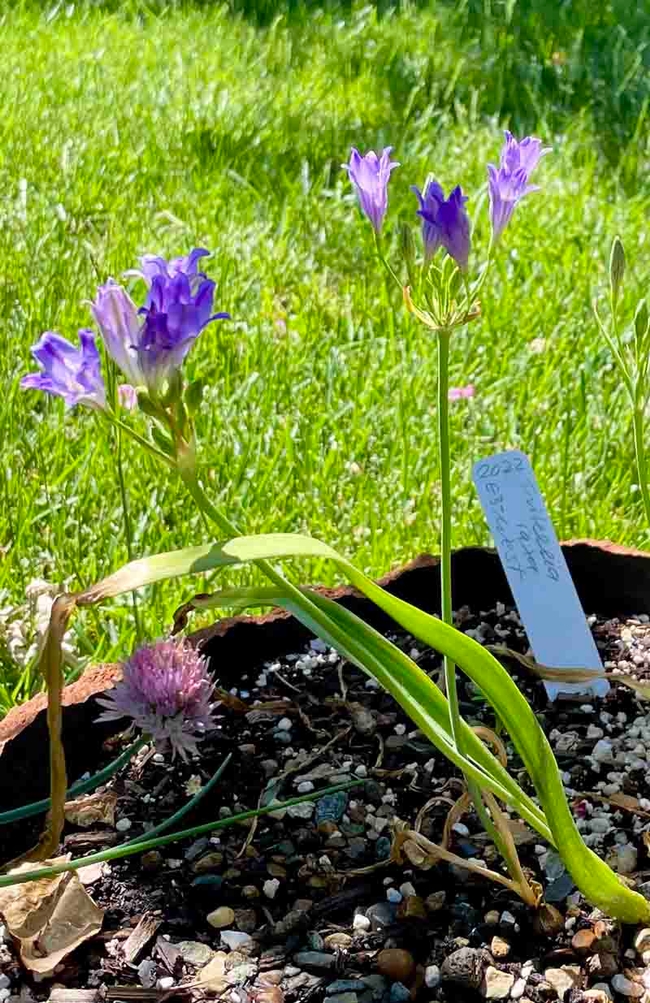
Blue-eyed or yellow-eyed grass (Sisyrinchium), which grows from a corm, is easy to cultivate and establishes quickly, producing lovely violet-blue or yellow star-shaped flowers atop flowering stems. They are a member of the iris family and will readily spread if given some moisture.
Native bulbs are well-adapted to California's climate and growing regions and are especially beautiful when used in gardens and wildflower meadows that feature native plants.
The main requirements for growing bulbs, corms, and rhizomes include a cool, wet winter with little hard frost, well-drained soil, fairly deep planting and, most critically, total dryness all summer to avoid rotting. Native plant gardeners have had luck growing them in containers as well as the ground but some of these might need several growing seasons before you see your first blooms. If you are planting Fall bulbs to begin with, then you are already a patient gardener!
Planting Fall bulbs isn't simply a garden task, it's a gesture of hope and testament to nature's resilience. You are investing in the beauty of the future. Whether you are a seasoned gardener or a novice with a newfound passion for these plants, this simple act of tucking them into the earth, hidden away until they burst forth in Spring, is a connection to nature's cycles of life and renewal.
UC Master Gardeners of Butte County are part of the University of California Cooperative Extension (UCCE) system. To learn more about us and our upcoming events, and for help with gardening in our area visit our website. If you have a gardening question or problem, email the Hotline at mgbutte@ucanr.edu or leave a phone message on our Hotline at 530-552-5812. To speak to a Master Gardener about a gardening issue, or to drop by the MG office during Hotline hours, see the most current information on our Ask Us section of our website.
